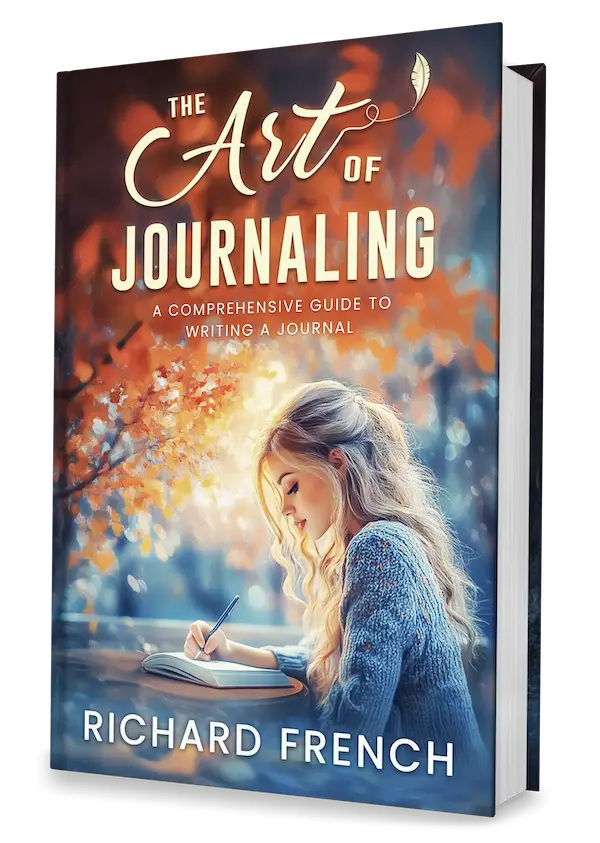Recent research in the Journal of Anxiety Disorders (2023) shows that using structured journal prompts for anxiety can reduce symptoms by up to 42% within eight weeks. Another study in Behavioral Sciences found that people who used specific journal prompts for anxiety experienced better results than those who practiced free-form journaling.
How Journal Prompts for Anxiety Change Your Brain
Using journal prompts for anxiety isn’t just about feeling better in the moment. Research shows these changes happen in your brain when you journal regularly:
- Reduced activity in the amygdala (your brain’s fear center)
- Better communication between emotional and logical brain areas
- Improved stress hormone regulation
Essential Morning Journal Prompts for Anxiety (Prompts 1-10)
Starting your day with anxiety journal prompts can reduce morning anxiety by 27%, according to CBT research. Here are your first ten journal prompts for anxiety:
- “Today’s top three priorities are…”
- “I feel anxious about ___, and I can manage it by…”
- “Three things within my control right now…”
- “My calm morning routine includes…”
- “I give myself permission to…”
- “One small step I’ll take today…”
- “Instead of worrying, I will…”
- “My support system includes…”
- “I feel strongest when…”
- “Today, I choose to focus on…”
Here is a real response from someone using anxiety journal prompts in the morning. This example shows how you can use a prompt to work through anxious thoughts.
Prompt: “I feel anxious about ___, and I can manage it by…”
Response: “I feel anxious about my job interview this afternoon, and I can manage it by remembering they already liked my resume enough to call me in. I’ve prepared my STAR examples, researched the company, and have my questions ready. Instead of imagining worst-case scenarios, I’ll focus on reviewing my preparation notes and taking deep breaths. Even if I don’t get this job, each interview makes me better at interviewing.”
Afternoon Journal Prompts for Anxiety (Prompts 11-20)
These midday journal prompts for anxiety help you reset and refocus:
- “My anxiety is telling me ___, but I know…”
- “Three things going well right now…”
- “When I feel overwhelmed, I can…”
- “My safe space looks/feels like…”
- “I’m grateful for…”
- “One thing I’ve handled well today…”
- “My anxiety coping tools are…”
- “I can reach out to…”
- “My body needs…”
- “A small win today was…”
Here is another response from someone using journal prompts for anxiety during their midday.
Prompt: “My anxiety is telling me ___, but I know…”
Response: “My anxiety is telling me everyone at the gym is judging me, but I know most people are focused on their own workouts. I’ve been coming here for three weeks now, and no one has said or done anything negative. The guy at the front desk even remembered my name today. My anxiety makes threats seem bigger than they are.”
Evening Reflection Journal Prompts for Anxiety (Prompts 21-30)
End your day with these calming journal prompts for anxiety:
- “Today’s challenges taught me…”
- “I’m proud of how I…”
- “Tomorrow, I will prioritize…”
- “Three positive moments today…”
- “I choose to let go of…”
- “My body is telling me…”
- “I acknowledge my progress in…”
- “Things that helped me stay calm…”
- “I appreciate myself for…”
- “Tomorrow is a new day, and…”
Here is a third example response from someone using journal prompts for anxiety during their evening reflection.
Prompt: “I choose to let go of…”
Response: “I choose to let go of the idea that I need to be perfect in meetings. My voice shook a bit during my presentation, and I lost my train of thought once, but I still got my main points across. People were nodding and engaged. The small stumbles don’t matter as much as I think they do.”

Frequently Asked Questions About Journal Prompts for Anxiety
What’s the Best Time to Use Journal Prompts for Anxiety?
Research shows morning journaling reduces daily anxiety by 25%, but the best time is when you can maintain consistency. Many people find success with these patterns:
- Morning: Set a positive tone
- Evening: Process the day
- During anxiety attacks: Immediate coping
- Regular scheduled times: Build routine
How Do Journal Prompts Help with OCD and Anxiety?
When using journal prompts for anxiety and OCD, structure is key:
- Set specific time limits
- Use structured prompts
- Focus on forward movement
- Avoid repetitive thinking
- Track progress objectively
What Makes These Journal Prompts Different from Regular Journaling?
These specific journal prompts for anxiety:
- Target anxiety-producing thoughts
- Include CBT techniques
- Promote solution-focused thinking
- Guide you through emotional processing
- Build coping skills systematically
How Long Should I Write Using These Journal Prompts for Anxiety?
Studies show optimal benefits with:
- 15-20 minutes per session
- Daily consistency
- Quality over quantity
- Focus on completion, not perfection
Making the Most of Your Anxiety Journal Prompts
The 3-3-3 Rule with Journal Prompts for Anxiety
The 3-3-3 rule is a simple but powerful method that helps bring your mind back to the present moment when anxiety feels overwhelming. This technique works by engaging your senses and physical awareness, which naturally reduces anxiety’s hold on your thoughts. When you combine this method with journal prompts for anxiety, you create a stronger tool for managing anxious feelings.
Here’s how to use the 3-3-3 rule in your anxiety journal:
- Write down 3 things you see right now in detail. Describe their colors, shapes, and how they look in this moment.
- Describe 3 sounds you hear, noting their intensity, distance, and how they make you feel.
- Move 3 body parts mindfully and write about the sensations you experience – like how your shoulders feel when you roll them or how your feet feel pressing against the floor.
Tracking Progress with Your Anxiety Journal Prompts
Monitor your journey by noting:
- Anxiety levels before and after writing
- Most helpful prompts
- Patterns and triggers
- Successful coping strategies
Expert Tips for Using Journal Prompts for Anxiety
Mental health professionals who work with anxiety have found certain practices that make journal prompts for anxiety more effective. Starting with just 5 minutes of writing helps build the habit without feeling overwhelming. Many people give up on journaling because they think they need to write for a long time, but shorter, consistent sessions often work better.
When choosing which journal prompts for anxiety to use, pick ones that feel right for you. Not every prompt will fit your situation, and that’s okay. Keep your journal somewhere easy to reach, like your bedside table or desk drawer. This makes it more likely you’ll use it when anxiety rises.
Try to write without judging what comes out on the page. Your journal is a private space for working through anxiety, not a paper that needs to be perfect. Looking back at your entries each week helps you spot patterns in your anxiety and notice what helps most.
Remember to take deep breaths while writing, especially when working with tough emotions. You can change or adjust the prompts as you learn what helps you most. Creating a quiet, comfortable space for writing can also make your anxiety journaling practice more effective.
Combining Journal Prompts with Other Anxiety Management Tools
Using journal prompts for anxiety works best when combined with other anxiety management strategies. Deep breathing exercises can help calm your mind before you start writing, making your journaling practice more effective. Try taking five deep breaths before you begin writing, and notice how this affects your thoughts.
Mindful walking provides another powerful complement to your anxiety journaling practice. Taking a short walk before writing can help clear your mind and give you fresh perspectives to write about. Even a five-minute walk around your home or office can make a difference in how you approach your journal prompts for anxiety.
Creating a regular sleep schedule supports your anxiety management efforts too. When you’re well-rested, you’ll find it easier to write thoughtfully and process your emotions through journaling. Try writing in your anxiety journal before bed to help clear your mind for better sleep.
Good nutrition also plays a key role in managing anxiety. Consider keeping track of how different foods affect your anxiety levels in your journal. This can help you identify patterns and make helpful changes to your diet.
Many people find that joining a support group adds another layer of help to their anxiety management. You can share your experiences with journal prompts for anxiety and learn how others use them successfully. Remember that while journaling is powerful, professional guidance can provide extra support when you need it.
Common Challenges and Solutions
Challenge 1: “I don’t know what to write”
Solution: Start with simple prompts and build complexity gradually
Challenge 2: “I don’t have time”
Solution: Begin with 5-minute sessions using focused journal prompts for anxiety
Challenge 3: “Writing makes me more anxious”
Solution: Use structured prompts and set time limits
Conclusion: Your Journey with Journal Prompts for Anxiety
Starting your anxiety journaling practice doesn’t have to be complicated. Choose one or two journal prompts for anxiety that speak to you and begin there. Remember, research shows that consistent, brief journaling sessions are more effective than irregular, lengthy ones.
Remember:
- Start small
- Be consistent
- Track progress
- Adjust as needed
- Celebrate small wins
Using these journal prompts for anxiety is a proven way to reduce anxiety symptoms and build lasting emotional resilience. Begin with whatever prompt feels right, and let your practice grow naturally from there.







